Trash is thrown away in official plastic trash bags with the price of the bag covering the cost to dispose of the containing items. Therefore, the garbage system in Korea is based on how much you throw away, as opposed to a monthly general payment system. Trash bags are sold on a district by district basis (구, 區, gu) and are sold at convenience stores, neighborhood grocery stores, and larger chain grocery stores. General waste is everything that can fit inside a standardized trash bag that isn’t food and isn’t recyclable. Certain electronics, items that are too big to fit in one of these bags, or are too heavy that they would rip the bag open, should be disposed of separately.
Bags usually are sold in groups rolled together as shown directly below on the left, or are folded in groups as shown in an image a little farther down this page.
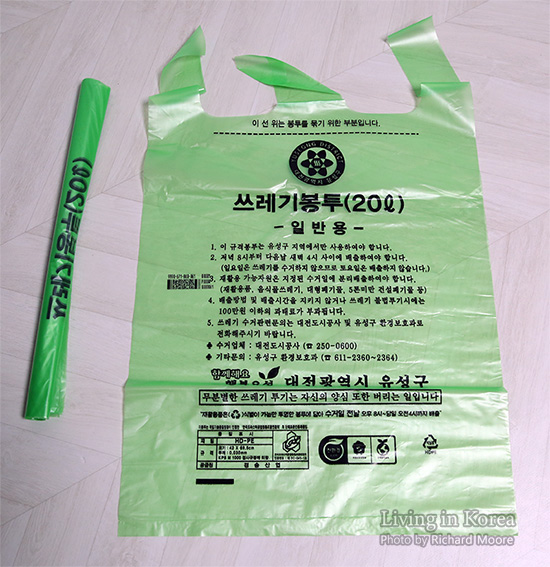
The bags themselves say their district in Korean and might or might not be bilingual. This bag mentions 대전광역시 for Daejeon City and then 유성구 for Yuseong-gu, i.e., Yuseong District.

As the government is clamping down on stores providing white plastic shopping bags, many stores are selling these official trash bags as an alternative. If you visit a store and only buy trash bags, you may be restricted to buying them with cash, but this seems to be the exception and not the norm. The prices of trash bags, sizes, and colors will vary district to district. The image below is from a larger chain grocery store and has various trash bags on display for two different districts as the area gets shoppers from both areas. Yuseong-gu bags are on the left and Seo-gu bags are on the right and both are unfortunately the same color. It is hard to see in the image, but there are white labels above each section indicating which bags are for where.
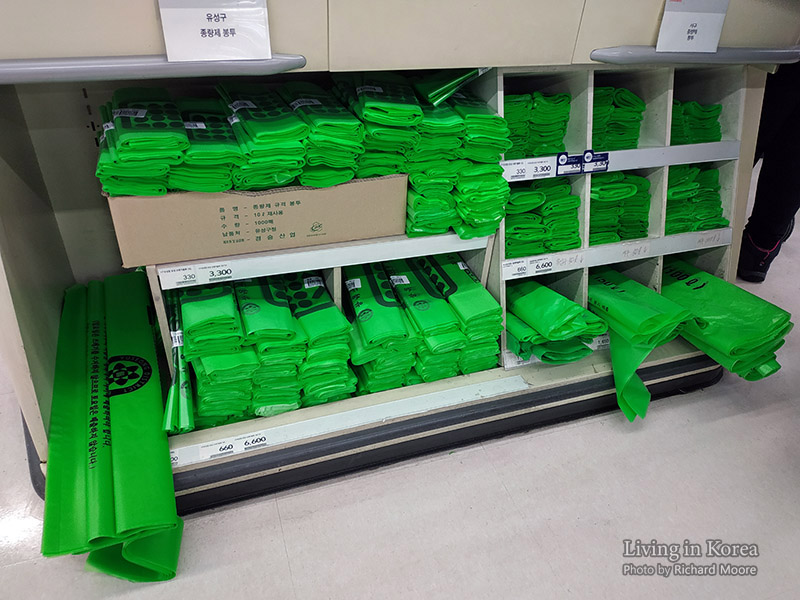
If you use bags from the wrong district you can get in trouble as the district picking up the trash was not paid to dispose of it. If you visit your local government office you can buy stickers so that trash bags purchased in one district can be used in another. This is primarily used for when people move and have a stack of extra trash bags leftover. The number of districts this sticker rule applies to was expanded in autumn 2019, but still does not apply to all districts. The term for this sticker will also vary city by city or sometimes district by district, like in different areas of Incheon.
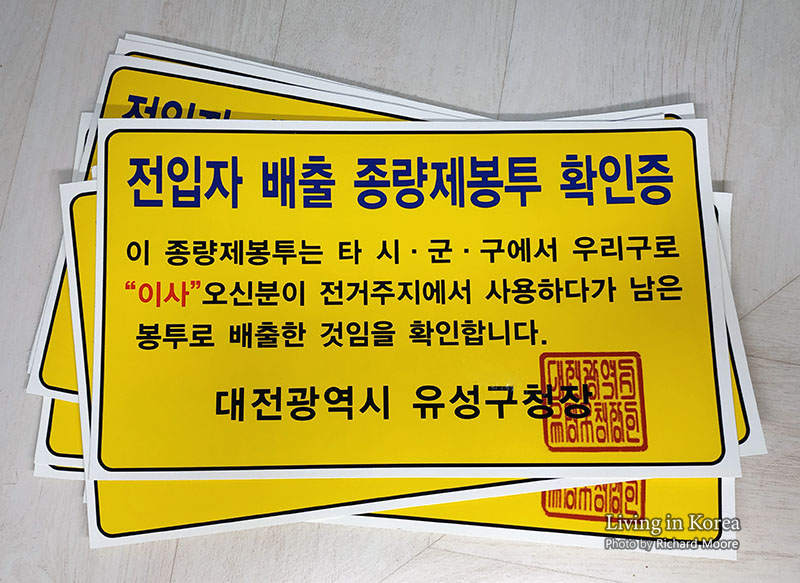
There are two types of bags, general trash (일반용 쓰레기봉투, 一般用 쓰레기封套, ilbanyong sseuregi bongtu) as shown on this page, and food trash (음식물용 쓰레기봉투, 飮食物用 쓰레기封套, eumsingmuryong sseuregi bongtu). Some apartments use a weight system and charge by weight to discourage food thrown out unnecessarily. This system was thought of to be the new norm but in reality has spread very slowly.
Bags are sold in liters and the most common sizes for general trash bags are 10, 20, and 100. The most common sizes for food trash are 1, 2, 3, 5, 10, and 10 liters. Some districts will require you place the food trash bags in plastic containers so street cats and bugs cannot rip open the bags. If you do not separate your food trash from your general trash, or if you use the wrong bag, you may receive a penalty from your district. Usually they take a picture of the offending trash bag, a picture of the offending food item within the trash, and a picture of contact information indicating you are responsible – usually an envelope with your name and address. These images and a fine will be sent to your residence.
Sometimes you’ll see stickers on offending trash with the idea of using this as a teaching moment and for the offender to repackage the trash properly before it is picked up by the garbage man. The notices below state that these items, which are recyclable, were not properly disposed of and therefore will not be collected by the trash collector until properly disposed of.
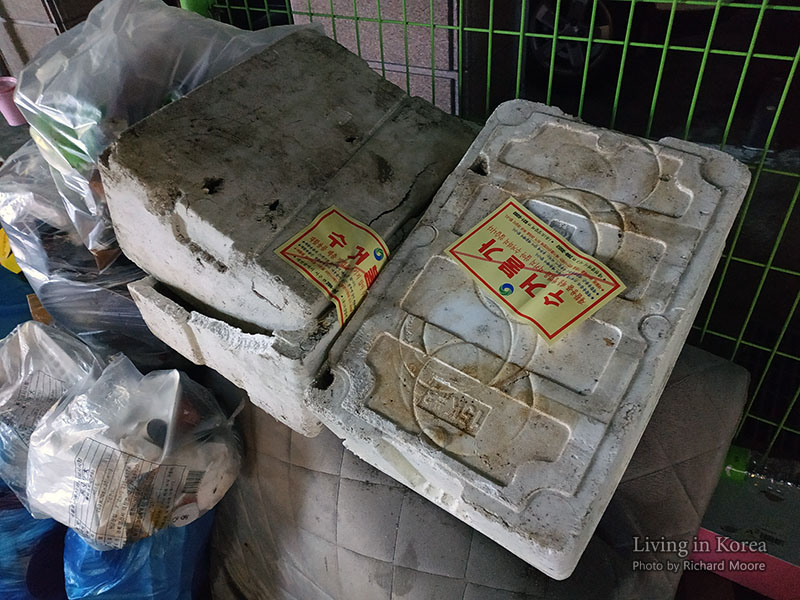
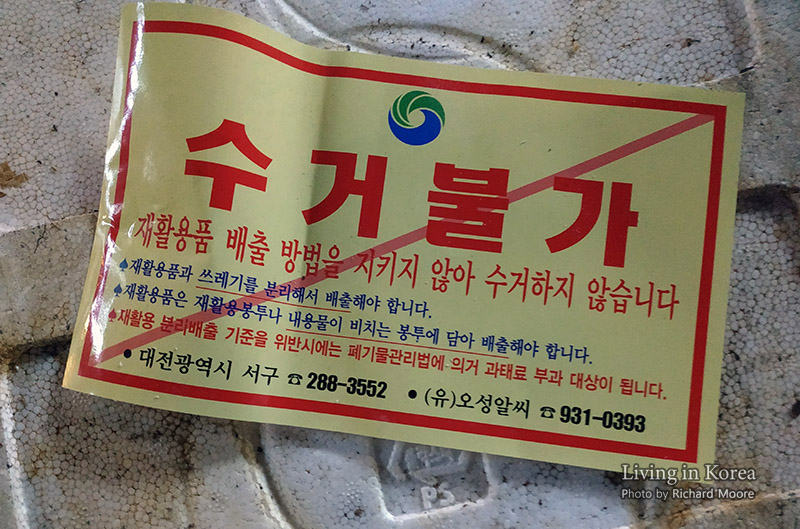
Both general trash bags and food trash bags will have a dotted line near the top of the bag. This is a maximum fill line and penalties exist for overflowing trash bags. Only fill the bag to that line, tie it closed, and place it at the appropriate disposal location on the correct day and within the correct hours.
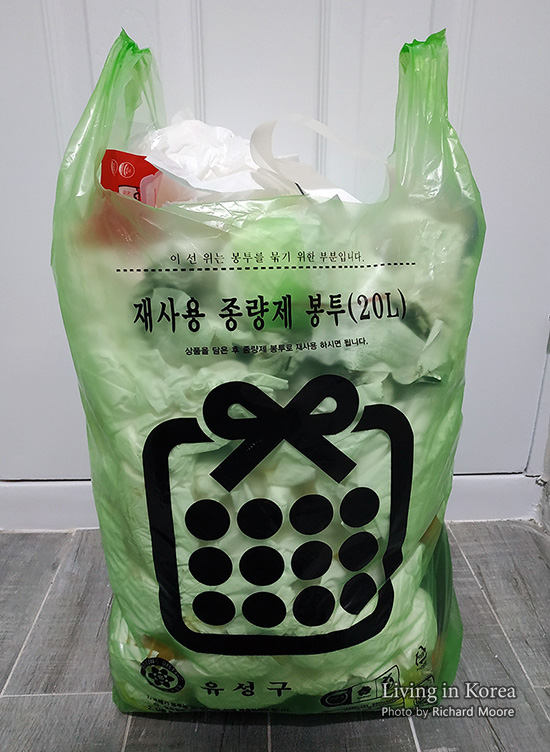
This page and following subpages will give you information on correct disposal to the best of our abilities and gives examples wherever possible. Not throwing away trash properly can result in you getting a fine. Penalties and fines will differ city by city and district by district but the following are a good general overview of potential fines that exist.
- Disposal of trash on wrong day
- Disposal of trash at wrong location
- Littering, i.e., cigarettes butts, gum, other small items
- Mixing general waste, food trash, and/or recyclable items within the same trash bag
- Overflowing trash bag, i.e., careful of the dotted maximum fill line as shown above
- Not using an official trash bag, i.e., using a generic plastic bag